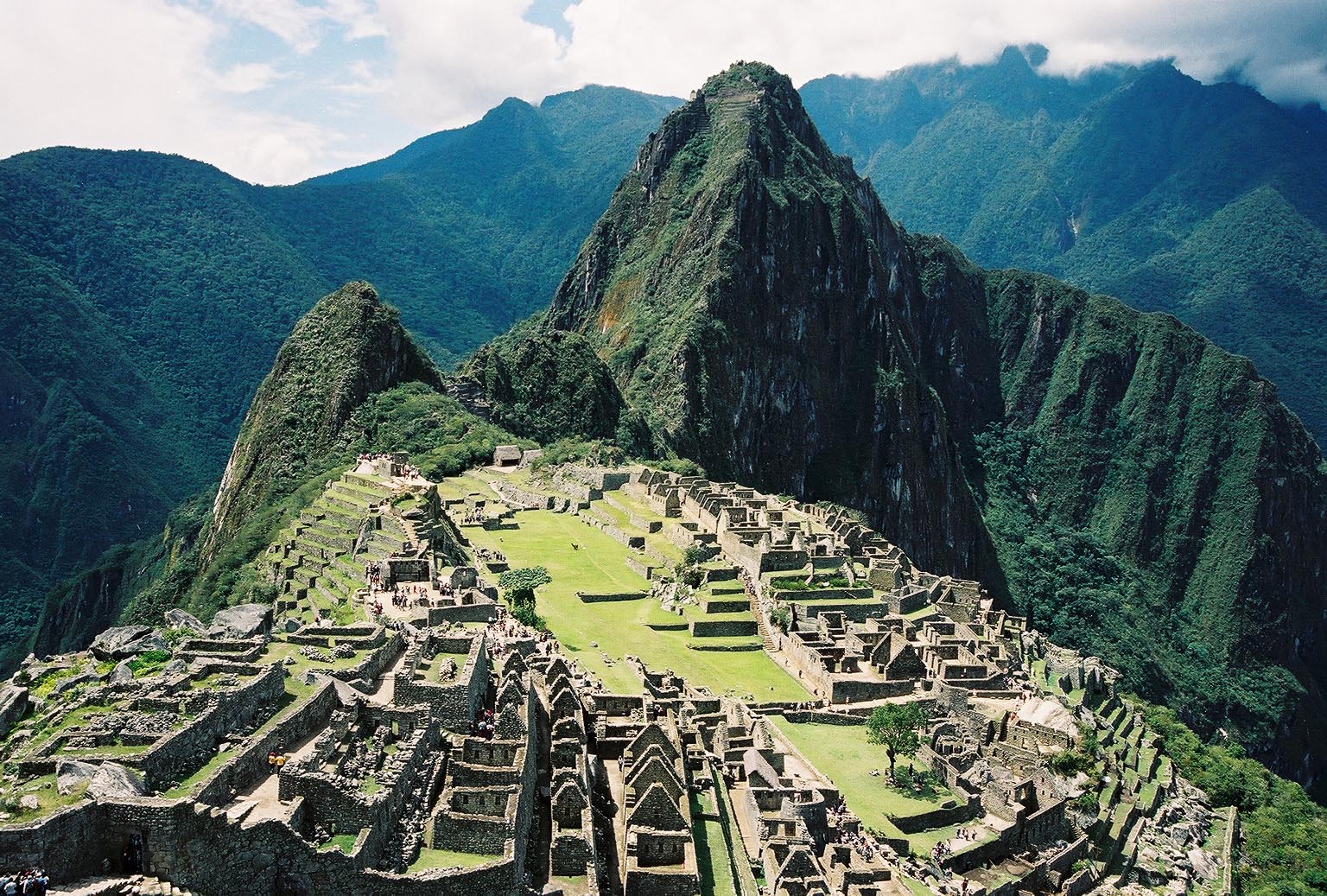The Most Fascinating UNESCO World Heritage Sites
There are almost 1,000 UNESCO World Heritage Sites scattered across the globe. Some are well-known and some are easy to get to, but the list gets longer every year as UNESCO designates more and more. There are a few people in the world who have made it their life’s work to visit every single one of these sites, and, after traveling for decades, are well up to around seven or eight hundred.
If you have a spare million dollars and a couple of years free, there are some companies that will arrange a tour of all pf the UNESCO sites for you. But if you don’t have that kind of money or time, here is a list of the most fascinating World Heritage Sites to start your adventure.
Hill Forts of Rajasthan – India
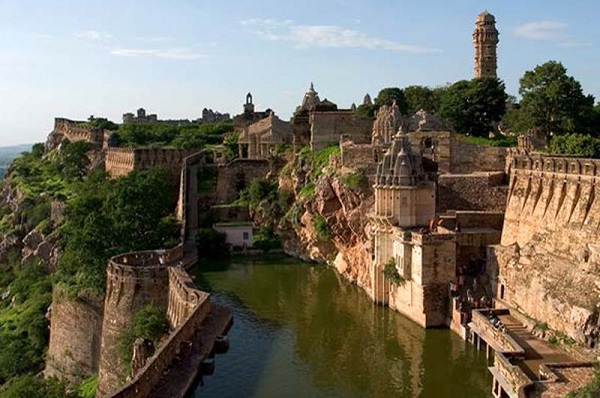 The six impressive forts of Rajasthan are Jaipur, Chittorgarh, Jhalawar, Sawai Madhopur, Jaisalmer, and Kumbhalgarh, and they were designated World Heritage Sites by UNESCO in 2013 for India. The architecture is amazing and some of the forts are up to 20 kilometers in circumference. They were built between the 8th and 18th Centuries by the Rajput princes and show how the region flourished. There are many temples, sacred buildings, palaces, and urban centers within the walls of these incredible forts where, for hundreds of years, music, art, and culture were taught. The forts take advantage of the natural landscape with hills, rivers, and forests. There are some very clever systems for collecting water which are still in use today to provide irrigation to the settlements.
The six impressive forts of Rajasthan are Jaipur, Chittorgarh, Jhalawar, Sawai Madhopur, Jaisalmer, and Kumbhalgarh, and they were designated World Heritage Sites by UNESCO in 2013 for India. The architecture is amazing and some of the forts are up to 20 kilometers in circumference. They were built between the 8th and 18th Centuries by the Rajput princes and show how the region flourished. There are many temples, sacred buildings, palaces, and urban centers within the walls of these incredible forts where, for hundreds of years, music, art, and culture were taught. The forts take advantage of the natural landscape with hills, rivers, and forests. There are some very clever systems for collecting water which are still in use today to provide irrigation to the settlements.
The Cradle Of Humankind – South Africa
The Cradle Of Humankind. Some 50 kilometers northwest of Johannesburg, South Africa, are the Sterkfontein Caves. Covering a vast area of 47,000 hectares, this is the place where a three-million-year-old skeleton was found, from which so much has been learned about mankind. Tools from two million years ago show what our ancestors were doing even before they learned the skill of fire-making. Burned bones that date back about one million year show that eventually they did learn the power of fire for cooking and warmth. This fascinating site joined the UNESCO World Heritage List in 1999.
Honghe Hani Rice Terraces – China
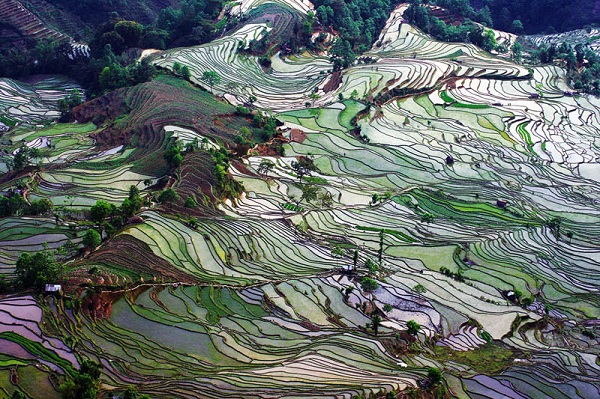 In some photographs, these rice terraces look like contour lines on a map drawn with a thick pencil or a wavy design on stained glass. It is actually the irrigation system of the Honghe Hani Rice Terraces in Southern Yunnan in China, which cover 1,000,000 acres. For 1,200 years, the water has traveled down from the forested top of the Ailao Mountain and been used to support the inhabitants of the 82 villages stretching between the terraces and mountain tops. Not just rice but also livestock and fish are farmed to supplement the red rice crop of the area. The people of Honghe Hani live in thatched houses and are great worshippers of fire, rivers, forests, mountains, and the sun and moon. Honghe Hani became a World Heritage Site in 2013.
In some photographs, these rice terraces look like contour lines on a map drawn with a thick pencil or a wavy design on stained glass. It is actually the irrigation system of the Honghe Hani Rice Terraces in Southern Yunnan in China, which cover 1,000,000 acres. For 1,200 years, the water has traveled down from the forested top of the Ailao Mountain and been used to support the inhabitants of the 82 villages stretching between the terraces and mountain tops. Not just rice but also livestock and fish are farmed to supplement the red rice crop of the area. The people of Honghe Hani live in thatched houses and are great worshippers of fire, rivers, forests, mountains, and the sun and moon. Honghe Hani became a World Heritage Site in 2013.
Namib Sand Sea – Namibia
After the Atacama Desert, the Namib Sand Sea is the oldest desert in the world. The dunes cover three million hectares with another 900,000 as a buffer zone. It is the only coastal desert in the world and can get very foggy, which in turn is the primary source of water for the flora and fauna that have chosen to call this red dusty stretch of land home. Most of the area is inaccessible, but the 300 meter red sand dune at Sossusvlei is one of the world’s tallest dunes and is well worth visiting. In the daytime, take a gentle hot-air balloon flight across this sandy sea and get a bird’s eye view of this incredible, rippling landscape or at night time try some star gazing. NamibRand Reserve is only one of two Gold Tier level International Dark Sky Reserves in the world, and with the closest small village 100 kilometers away, light pollution is non-existent. The bedrooms at Sossusvlei Desert Lodge have skylights over the beds, so laying back and watching the magic of the stars is really easy.
Giant’s Causeway – Ireland
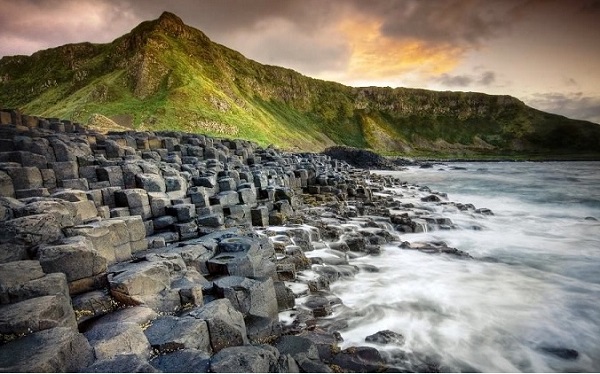 60 million years ago, the tectonic plates of North America and Europe were shifting. The magma from deep inside the earth was forced to the surface through cracks, and as it cooled basalt columns were formed. The columns are very regular in shape, mostly hexagonal, and the tallest are about 12 meters. The 40,000 columns form a series of stepping stones that go down the cliff and disappear under the sea. Legend has it that the steps were built by an Irish giant so he could respond to a challenge from a Scottish giant. This story is backed up to some degree as, across the North Channel in Scotland, there are some identical columns at Fingal’s Cave on isle of Staffa. The Giant’s Causeway might have been created 60 million years ago, but it wasn’t until 1986 that it was designated a UNESCO World heritage Site.
60 million years ago, the tectonic plates of North America and Europe were shifting. The magma from deep inside the earth was forced to the surface through cracks, and as it cooled basalt columns were formed. The columns are very regular in shape, mostly hexagonal, and the tallest are about 12 meters. The 40,000 columns form a series of stepping stones that go down the cliff and disappear under the sea. Legend has it that the steps were built by an Irish giant so he could respond to a challenge from a Scottish giant. This story is backed up to some degree as, across the North Channel in Scotland, there are some identical columns at Fingal’s Cave on isle of Staffa. The Giant’s Causeway might have been created 60 million years ago, but it wasn’t until 1986 that it was designated a UNESCO World heritage Site.
Great Barrier Reef – Australia
Two million visitors go to Australia every year to be fascinated by the 350,000 square kilometers of the Great Barrier Reef. Formed by 400 different species of tiny hard corals the size of a fingernail, the reef has taken millions of years to form. As the corals die, their skeletons build up to form the bedrock of the reef. The Great Barrier Reef has been a UNESCO World Heritage Site since 1975 and, as the world’s largest marine sanctuary, great care is being taken to protect the reef from being damaged by tourism. Organized boat tours and light aircraft trips are a great way to see the reef and some of the 2,000 different fish species that live there. If you want to get up close and personal with the brightly-colored fish, diving, swimming, snorkeling, and all manners of water sports abound.
The Terracotta Warriors – China
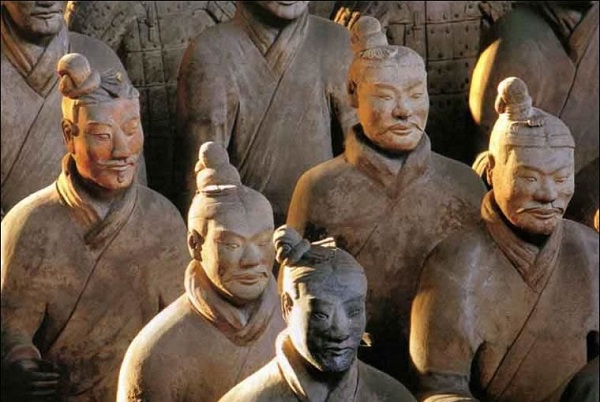 The First Emperor of China had vast armies in his lifetime, but to protect him in the afterlife, he was buried with an incredible 8,000 terracotta soldiers. This fascinating collection of figures also includes 520 horses pulling 130 chariots and 150 cavalry horses. Originally, they would have been buried with real weapons like swords, crossbows, and spears. Sadly, these have been looted over the years, but the details of the figures can still clearly be seen in their uniform, height, and hairstyle. The Terracotta Warriors were discovered in 1974 and were added to the UNESCO World Heritage List in 1987.
The First Emperor of China had vast armies in his lifetime, but to protect him in the afterlife, he was buried with an incredible 8,000 terracotta soldiers. This fascinating collection of figures also includes 520 horses pulling 130 chariots and 150 cavalry horses. Originally, they would have been buried with real weapons like swords, crossbows, and spears. Sadly, these have been looted over the years, but the details of the figures can still clearly be seen in their uniform, height, and hairstyle. The Terracotta Warriors were discovered in 1974 and were added to the UNESCO World Heritage List in 1987.
Brasilia – Brazil
Capital cities are not usually planned down to the last detail; usually a small village or town just gets bigger and bigger over the years and then maybe achieves city status. Not so with Brasilia. In 1956, President Juscelino Kubitschek put together an idea and then a team of men to design a new capital for Brazil from scratch. The city is designed in the shape of a plane, with a lake across the nose and a broad north-south road for transport. In the wings, there are various government buildings and a hotel while the main bus station is in the tail part. On each side of the north-south divide stands great blocks of housing, each area with its own school, church, and shop. As a testament to modern architecture and urban planning, Brasilia made it onto the UNESCO World Heritage list as an example of what can be achieved with forethought.


